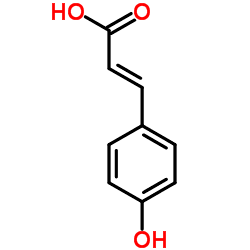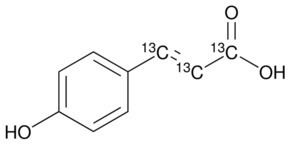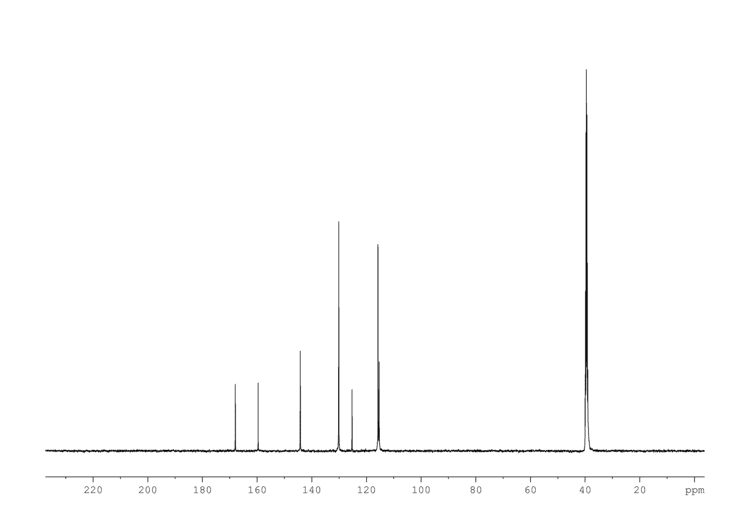 | ||
p-Coumaric acid is a hydroxycinnamic acid, an organic compound that is a hydroxy derivative of cinnamic acid. There are three isomers of coumaric acid—o-coumaric acid, m-coumaric acid, and p-coumaric acid—that differ by the position of the hydroxy substitution of the phenyl group. p-Coumaric acid is the most abundant isomer of the three in nature. p-Coumaric acid exists in two forms trans-p-coumaric acid and cis-p-coumaric acid.
Contents
- Natural occurrences
- In food
- Derivatives
- Biosynthesis
- Biochemistry
- Medicinal uses
- Biological Effects
- References

It is a crystalline solid that is slightly soluble in water, but well soluble in ethanol and diethyl ether.

Together with sinapyl alcohol and coniferyl alcohols, p-coumaric acid is a major component of lignin.
Natural occurrences
p-Coumaric acid can be found in Gnetum cleistostachyum.
In food

p-Coumaric acid can be found in a wide variety of edible plants such as peanuts, navy beans, tomatoes, carrots, basil and garlic. It is found in wine and vinegar. It is also found in barley grain.
p-Coumaric acid from pollen is a constituent of honey.
Derivatives
p-Coumaric acid glucoside can also be found in commercial breads containing flaxseed.
Diesters of p-coumaric acid can be found in carnauba wax.
Biosynthesis
It is biosynthesized from cinnamic acid by the action of the P450-dependent enzyme 4-cinnamic acid hydroxylase (C4H).

It is also produced from L-tyrosine by the action of tyrosine ammonia lyase (TAL).

Biochemistry
p-Coumaric acid is the precursor of 4-ethylphenol produced by the yeast Brettanomyces in wine. The yeast converts this to 4-vinylphenol via the enzyme cinnamate decarboxylase. 4-Vinylphenol is further reduced to 4-ethylphenol by the enzyme vinyl phenol reductase. Coumaric acid is sometimes added to microbiological media, enabling the positive identification of Brettanomyces by smell.
cis-p-coumarate glucosyltransferase is an enzyme that uses UDP-glucose and cis-p-coumarate to produce 4'-O-beta-D-glucosyl-cis-p-coumarate and UDP. This enzyme belongs to the family of glycosyltransferases, specifically the hexosyltransferases.
Phloretic acid is found in the rumen of sheep fed with dried grass and is produced by hydrogenation of the 2-propenoic side chain of p-coumaric acid.
Medicinal uses
p-Coumaric acid has antioxidant properties and is believed to reduce the risk of stomach cancer by reducing the formation of carcinogenic nitrosamines. p-Coumaric acid in honey also demonstrate in vitro anti-inflammatory activity
Biological Effects
p-Coumaric acid is normally present in honey, but not in the substitute nutrients based on high-fructose corn syrup that honey bee keepers feed to their colonies. This absence has been suggested as a possible contributor to Colony Collapse Disorder of honey bees because p-coumaric acid has been found to help honey bees detoxify certain pesticides. However, recent research has pointed to insecticides as the main reason for bee deaths.
